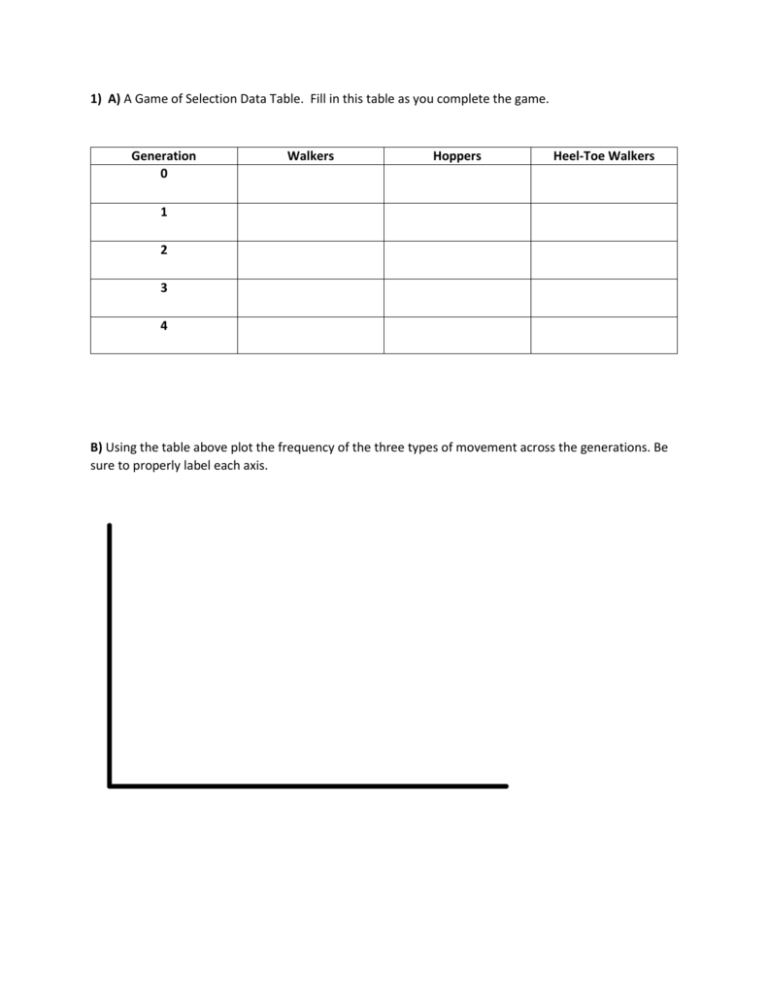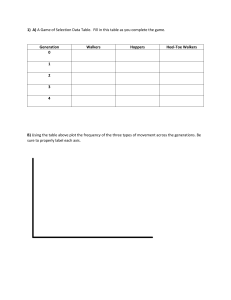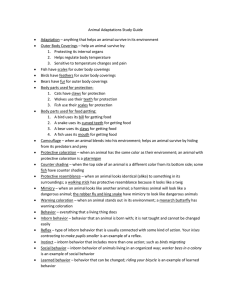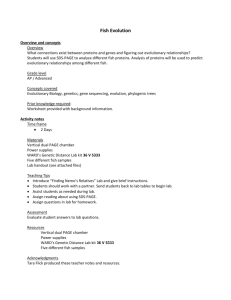A game of selection worksheet
advertisement

1) A) A Game of Selection Data Table. Fill in this table as you complete the game. Generation 0 Walkers Hoppers Heel-Toe Walkers 1 2 3 4 B) Using the table above plot the frequency of the three types of movement across the generations. Be sure to properly label each axis. 2) Below is a pair of graphs depicting beak size in a population of finches on the Galapagos Island of Daphne Major. Larger beaks are better at cracking open larger, harder seeds while small beaks are better at feeding on small seeds. In 1977 there was a drought that greatly reduced the abundance of small seeds on the island. Using the graphs below describe how and why beak size changed in this population as a result of the drought. What type of selection is this? 3) The larvae of certain species of flies can cause plants to grow bulbous structures known as galls in which the larvae can live. These galls face predation from both birds and parasitic wasps. Below is a data table with information on the percent survival for different sizes of gall (small, medium, and large), and a figure depicting the size distribution of a population of galls. Using this information draw a second curve on the figure illustrating what you think the population will look like after many generations. Gall Size Small Medium Large Percent Survival 58 % 83 % 63 % 4) Imagine you are a biologist studying a species of fish that live amongst dark rocks on the ocean floor. Individual fish vary in their coloration ranging from very light to very dark. Below is a data table from a sample of ten fish. The column on the left is an individual’s color score which ranges from 0 to 1 where 0 is a very dark colored fish and 1 is a very light colored fish. The column on the right is the total number of offspring each individual was able to produce over the course of its life. Color Score 0.4 0.8 0.1 0.2 0.8 0.9 0.2 1.0 0.3 0.6 # Offspring produced 15 19 3 5 22 26 11 28 10 19 A) Use the axes provided below to create a scatterplot of the relationship between color and offspring produced (be sure to label everything). What type of selection is acting on the coloration of these fish? How do you think the average coloration in this population will change after 100 generations? B) Now imagine that a hurricane has deposited large patches of light colored sand among the rocks. Use the axes below to sketch how you think your graph from part A would change under these new conditions. What type of selection is acting under these new conditions?











